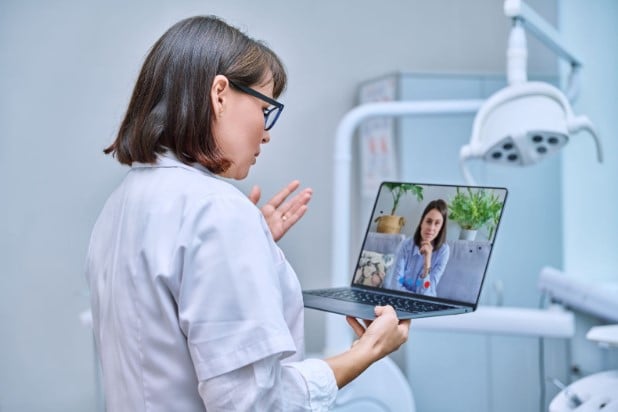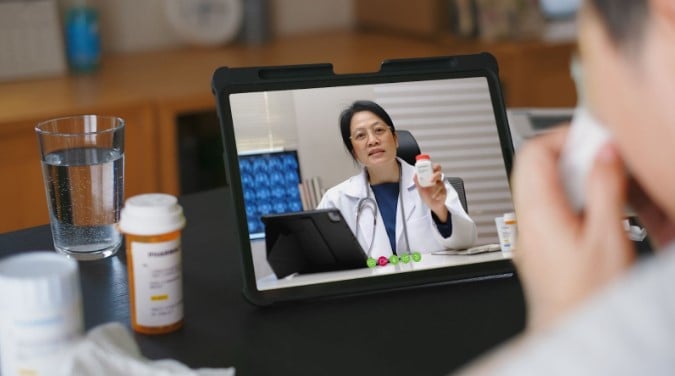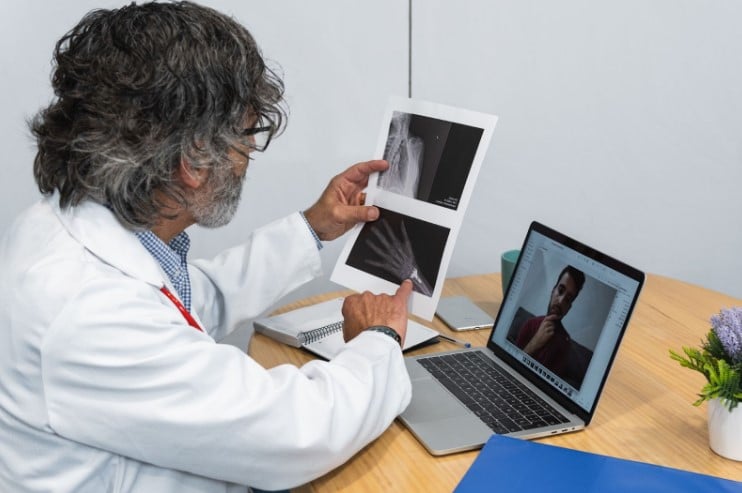Introduction
Healthcare is an industry constantly seeking new advancements and adopting better ways to provide patient care. In particular, many healthcare professionals look for ways to reach more individuals and share their expertise. That’s why the recent adoption and popularity of video conferencing has been beneficial to the healthcare sector since the COVID-19 pandemic.
As a matter of fact, video conferencing has become an essential technology for doctors and healthcare providers. Many healthcare companies around the world have started offering video consultation services in different forms. For instance, Mayo Clinic, one of the top-ranked hospitals in America, offers video appointments for routine checkups, to discuss test results, and monitor health conditions remotely.
Studies show that the healthcare video conferencing market was approximately $91.7 billion in 2023. It is expected to grow and potentially reach $156.7 million in 2033. In this article, we’ll see how video conferencing technology is changing the healthcare industry and patients’ perceptions of healthcare.
The Shift to Telemedicine and Virtual Patient Care
Before COVID-19, telemedicine wasn’t widely recognised. To visit a doctor or any health professional, one had to book an appointment or visit a care centre. However, during the pandemic, lockdowns and restrictions pushed health professionals to start offering their services through video conferencing. Since then, video conferencing has become a new norm in healthcare. Almost all healthcare institutions now offer online programmes and dedicated counselling to individuals. Many health professionals even handle one-on-one coaching sessions in their free time, and telemedicine has become a secondary income source for them.

One of the major advantages of telemedicine and virtual care is that anyone can connect to a doctor and get an expert opinion right from home in an instant. This eliminates the need for travel, reduces time spent waiting in queues, and provides clear information about the doctor’s availability. For these reasons, video conferencing has become a valuable tool for both care seekers and healthcare providers.
Read more: When was video conferencing invented?
Enhancing Patient-Doctor Communication
In one-on-one video conferencing, patients and doctors can connect instantly and communicate in a private environment. Even though in-person interactions are vital for certain medical assessments, video consultations provide an effective alternative where a patient’s physical presence is not strictly necessary. Modern video conferencing for healthcare now comes with advanced features like electronic health records and virtual waiting rooms, enhancing the patient experience and simplifying healthcare administration.

Video calling offers several benefits over traditional phone calls and texts. Unlike phone calls that limit doctors to verbal descriptions of symptoms, video calls let healthcare providers visually assess a patient’s condition, reducing the risk of errors or misjudgment. Also, text-based communication systems can be inadequate for understanding patient’s health conditions and medical routines. In video consultations, doctors and patients can discuss current health conditions, illnesses, treatments, and other health information thoroughly, supporting more informed and effective care.
Expanding Patient Access to Healthcare
Certain remote rural areas lack convenient transport options, and travel can be challenging for both residents and healthcare professionals. In these scenarios, video conferencing serves as a critical and practical solution for accessing healthcare services. Rural residents can receive valuable guidance on lifestyle choices and preventive health measures by scheduling regular video consultations or short video chats with healthcare providers. Remote access to healthcare offers better awareness and can significantly contribute to disease prevention in underserved areas.

Challenges with Internet Connectivity and Quality
Video conferencing has certain limitations, like unstable internet connections. Even in urban areas, connections can be inconsistent. For instance, in Brownsville-Harlingen, Texas, a metropolitan area with more than 137,982 households, nearly one-fifth of households lack internet access. For a smooth video call experience, both ends must have a stable internet connection. Improving internet connectivity in all rural areas is a concern for both government officials and communication companies.
Video conferencing in healthcare is still in its early stages, and very few platforms have been developed that can support healthcare-specific tasks. The lack of robust video conferencing tools created especially for healthcare can impact doctor-patient interactions and may even lead to serious outcomes, such as miscommunication or inaccurate treatment recommendations. Reliable, health-focused video conferencing software is crucial to ensure safe, effective, and high-quality virtual care.
Read more: Telescope into future communication innovations
The Impact on Chronic Diseases and Remote Monitoring
Chronic diseases require regular monitoring and frequent checkups. Travelling to a health care centre for regular checkups, like blood pressure levels, often involves certain inconveniences. Video conferencing tools enable patients to conduct these checkups from home under professional guidance.

Along with video conferencing, smartphone applications and smart gadgets can monitor different health metrics independently. Using these digital monitoring tools, doctors can easily access patients’ health records remotely. It is also reported that 33% of patients prefer fewer in-clinic visits and express a strong desire for more video conferencing options in healthcare settings. Patients have a positive view of remote engagement and appreciate the flexibility of virtual care.
Conclusion
The role of video conferencing is growing daily in the healthcare industry. We are seeing advanced healthcare services being brought closer to individuals in rural and non-urban areas. Recently, specialised video consultation platforms have been developed specifically for telemedicine. These platforms have enhanced accessibility for patients by facilitating real-time communication with healthcare professionals.
Many healthcare providers are making substantial investments in developing their own video conferencing tools specifically for telemedicine. These tools are designed to ensure data security and offer personalised features. Video conferencing tools have the potential to reshape the healthcare industry. They help bridge geographic gaps and make expert care more accessible. Ultimately, video technology could redefine healthcare, making quality care accessible to more people than ever before.
Continue reading: Cut Carbon, Connect Globally Through Video Conferencing
Sources for the Images
-
ADDICTIVE_STOCK, 2024. Senior doctor using laptop and talking on video call. Envato
-
Freepik. Care job scene with patient being cared for - Generated by AI.
-
valeriygoncharukphoto, 2024. Doctor dentist working in office, using laptop, making video call conference. Envato
-
Weedezign_photo, 2024. Telehealth concept, Asian woman video call with her doctor. Envato
-
wirestock, 2024. Shallow focus of healthcare consult showing the X-RAY of bones during an online consultation. Envato
References
-
Accenture, 2020. Patients Want to Continue to Use Virtual Care Even After the Pandemic Ends, Accenture Survey Finds
-
Balogh, D., 2024. The Most (and Least) Connected Cities in the United States. Ooma
-
Future Market Insights, 2023. Healthcare Video Conferencing Solutions Market by Deployment Mode, Component & Region. Forecast 2023 to 2033. Future Market Insights
-
Mayo Clinic, 2023. Video Appointments using Patient Online Services. Mayo Clinic
